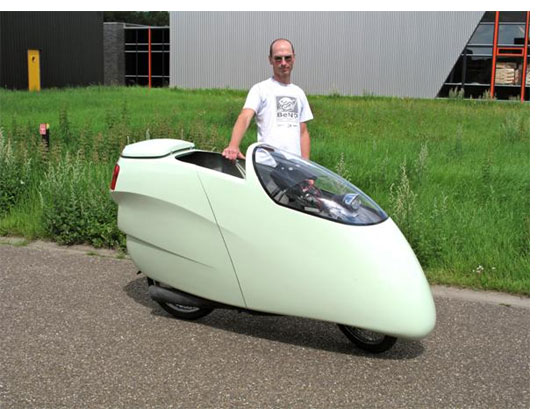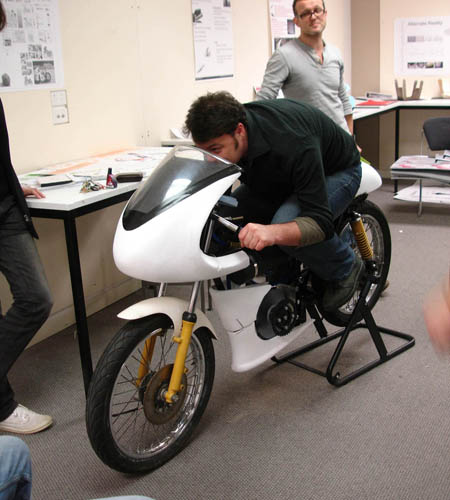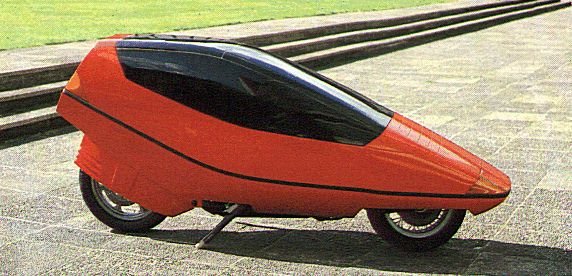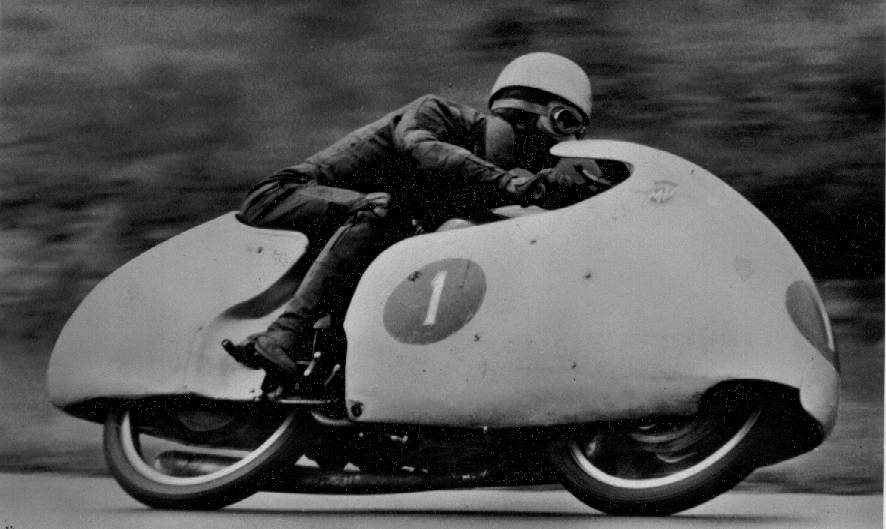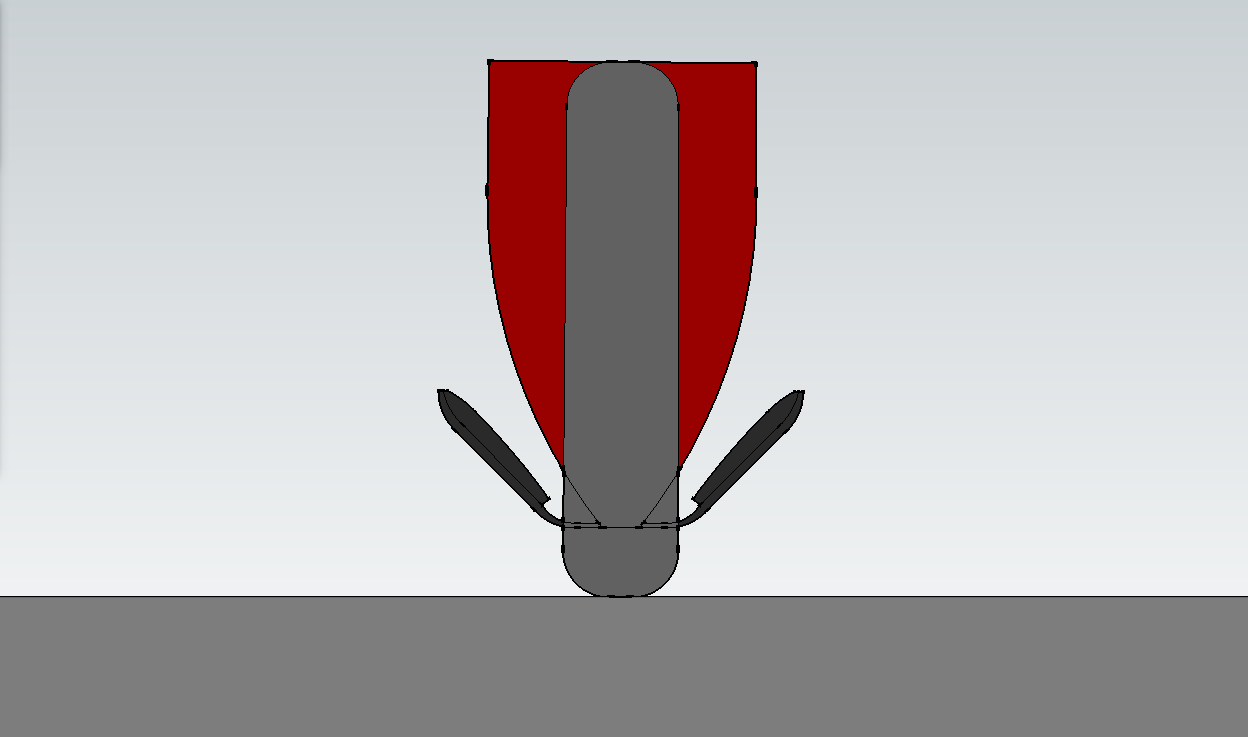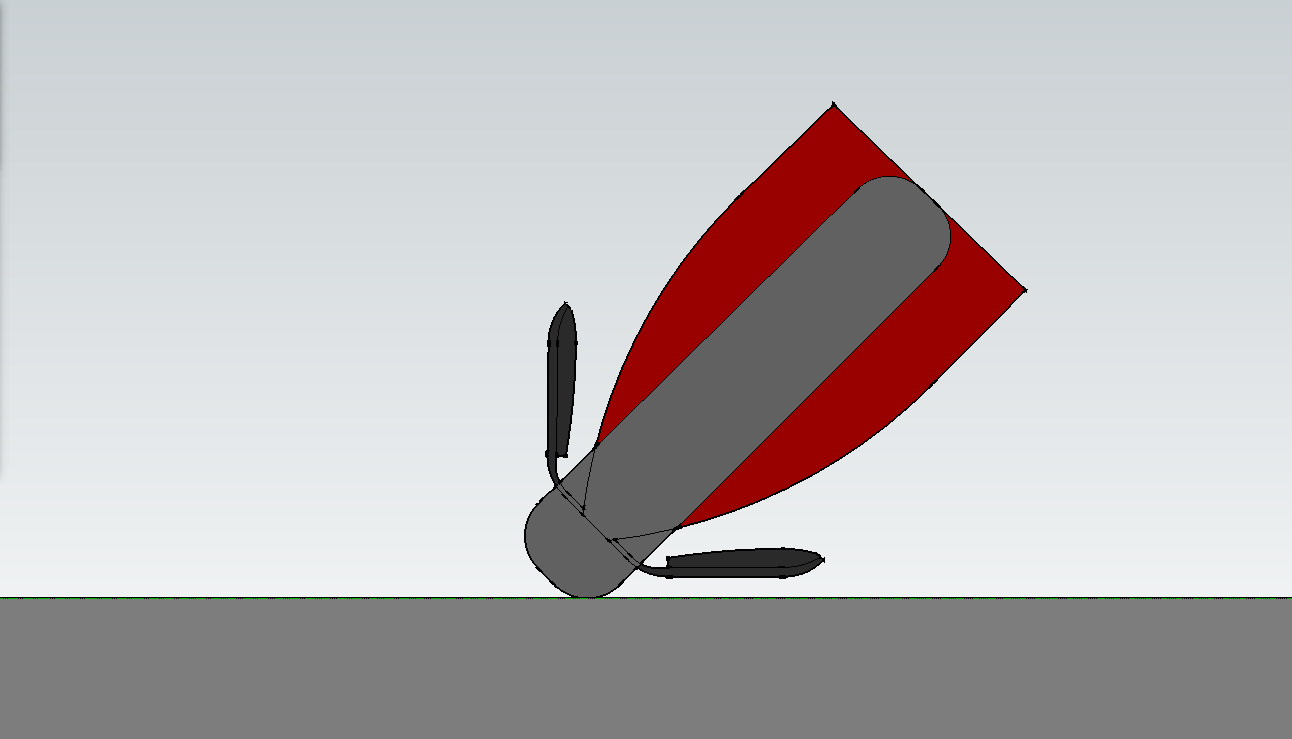FIM World Championship Grand Prix Regulations 2016
Considerably shorter than the FIA Tech Regs governing Bodywork...


2.4.4.7 Bodywork
1. The windscreen edge and the edges of all other exposed parts of the
streamlining must be rounded.
2.
The maximum width of bodywork must not exceed 600 mm. The width
of the seat or anything to its rear shall not be more than 450 mm (exhaust
pipes excepted).
3. Bodywork must not extend beyond a line drawn vertically at the leading
edge of the front tyre and a line drawn vertically at the rearward edge
of the rear tyre. The suspension should be fully extended when the
measurement is taken.
4. When viewed from the side, it must be possible to see:
a) At least 180 degrees of the rear wheel rim.
b) The whole of the front rim, other than the part obscured by the
mudguard, forks, brake parts or removable air-intake.
c) The rider, seated in a normal position with the exception of the
forearms.
Notes: No transparent material may be used to circumvent the above
rules. Covers for brake parts or wheels are not considered to be bodywork
obstructing the view of wheel rims in regard to the above rules.
5. No part of the motorcycle may be behind a line drawn vertically at the
edge of the rear tyre.
6. The seat unit shall have a maximum height of the (approximately) vertical
section behind the rider’s seating position of 150 mm. The measurement
will be taken at a 90° angle to the upper surface of the flat base at
the rider’s seating position, excluding any seat pad or covering. Any onboard
camera/antenna mounted on the seat unit is not included in this
measurement.
7. Mudguards are not compulsory. When fitted, front mudguards must not
extend:
a) In front of a line drawn upwards and forwards at 45 degrees from a
horizontal line through the front wheel spindle.
b) Below a line drawn horizontally and to the rear of the front wheel
spindle.
The mudguard mounts/brackets and fork-leg covers, close to the
suspension leg and wheel spindle, and brake disc covers are not considered
part of the mudguard.
8.
Wings may be fitted provided they are an integral part of the fairing or
seat and do not exceed the width of the fairing or seat or the height of
the handlebars. All edges of any wings fitted must have a minimum
radius of 2.5 mm. Moving aerodynamic devices are prohibited.
9. The lower fairing has to be constructed to hold, in case of an engine
breakdown, at least half of the total oil and engine coolant capacity
used in the engine (minimum 5 litres for MotoGP). This measurement
should be taken with the fairing fitted to the motorcycle, whilst both
wheels are on the ground and the motorcycle is upright at 90° to the
horizontal.
The lower fairing should incorporate a maximum of two holes of 25 mm.
These holes must remain closed in dry conditions and must be only
opened in wet race conditions, as declared by the Race Director.



